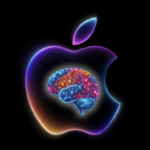Apple has long been at the forefront of technological evolution, and its foray into artificial intelligence (AI) is no exception. While competitors frequently make headlines for their bold developments in AI, Apple adopts a quieter yet no less impactful approach. Its AI-driven innovations span across devices, software, and services, creating a tightly integrated ecosystem designed for seamless user experiences.
From the introduction of Siri, one of the first mainstream voice assistants, to the advanced machine learning capabilities that power features like Face ID and on-device privacy, Apple’s AI journey has been marked by precision and user-centric design. AI in Apple products isn’t limited to assistants or biometrics, however. Features such as photo and video categorization in the Photos app, handwriting recognition with Apple Pencil, and real-time language translation in iOS position Apple Intelligence as an everyday utility.
The company’s Neural Engine, integrated into the A-series and M-series chips, plays a pivotal role in these advancements. By processing tasks like image recognition, natural language processing, and augmented reality, the Neural Engine allows Apple devices to perform AI computations with impressive speed and efficiency. This hardware-software synergy underscores Apple’s focus on providing robust AI without compromising user data through cloud dependence.
Apple views privacy not as a limiting factor but a differentiator. Many AI tasks are processed directly on devices instead of cloud servers, reducing data vulnerability. This “on-device intelligence” philosophy ensures personalized yet secure experiences, setting Apple apart from its peers in the AI space. By embedding AI into the fabric of its ecosystem, Apple maintains its commitment to simplifying complexities—offering innovation that feels both intuitive and effortless.
Understanding Apple’s Approach to Artificial Intelligence
Apple’s approach to artificial intelligence is deeply rooted in its commitment to privacy, user experience, and seamless integration across devices. Unlike many of its competitors, Apple prioritizes on-device machine learning over cloud-based AI processes whenever possible. This ensures that sensitive user data remains secure while still enabling advanced AI-driven functionality. Technologies like Core ML, Apple’s machine learning framework, power many of the AI features seen in its ecosystem, including Siri, Face ID, and even the revolutionary Photonic Engine in iPhone cameras.
Apple’s philosophy centers on creating AI tools that enhance user interactions without being intrusive. For instance, Siri, Apple’s voice assistant, has evolved to handle more complex queries while also processing commands locally on newer devices. This offline capability not only speeds up task completion but also aligns with Apple’s privacy-first ethos. Similarly, features such as Live Text, which recognizes text within photos, highlight Apple’s focus on practical, everyday AI applications. These capabilities integrate directly into existing workflows, making them intuitive for users.
Machine learning algorithms under Apple’s AI framework are designed to function harmoniously within its tightly controlled hardware-software ecosystem. For example, the Neural Engine in Apple’s custom silicon chips optimizes performance for AI-driven tasks, ensuring they are fast and efficient while consuming minimal power. Apple’s iterative hardware advancements continually enhance its AI’s potential, creating a feedback loop of innovation.
By weaving AI into its devices rather than treating it as a separate, standalone function, Apple ensures its technology feels natural. This approach positions the company uniquely in the industry, showcasing AI as a tool for empowerment rather than just an innovation showcase.
Key Features of Apple Intelligence: What Stands Out?

Apple Intelligence, designed to seamlessly integrate into its ecosystem, offers a range of standout features that prioritize privacy, user experience, and advanced automation. These capabilities set it apart within the competitive realm of AI-driven technologies.
Privacy-Centric Data Handling
Apple Intelligence emphasizes user privacy by default. Unlike many AI systems relying heavily on cloud-based data processing, Apple processes much of its information locally on the device. Technologies like on-device machine learning ensure that sensitive data such as Siri requests or personal preferences never leave the user’s hardware unless explicitly necessary. This commitment to privacy resonates across all Apple Intelligence features.
Seamless Ecosystem Integration
One of the key features is its tight integration within the Apple ecosystem. Apple Intelligence ensures that devices like the iPhone, iPad, Mac, Apple Watch, and HomePod work harmoniously. For example, Handoff enables tasks such as switching from an iPhone to a Mac mid-email with zero interruptions. Features like Universal Clipboard further extend this collaboration, allowing users to copy on one device and paste onto another seamlessly.
Advanced Siri Enhancements
Apple Intelligence significantly improves Siri’s contextual understanding. Users benefit from features such as personalized recommendations, follow-up question comprehension, and deeper app integration. Siri Shortcuts, another standout, enable users to craft automation routines, streamlining tasks with minimal effort. These highly customizable shortcuts empower users to interact with their devices more efficiently.
Proactive Suggestions
Apple employs its AI to deliver proactive suggestions tailored to user behavior. Examples include predictive text while typing, recommended apps based on time or location, and photo memories through the Photos app. The intelligence operates intuitively, learning and adapting without being intrusive.
Real-Time Translation
The Translate app with Apple Intelligence enables instant offline language translations. Designed for privacy and accessibility, the app features voice recognition, live conversation modes, and text translations across multiple languages while safeguarding user data on-device.
Apple Intelligence focuses on providing an intuitive, privacy-first, and deeply integrated AI experience.
Siri’s Evolution: From Voice Assistant to AI Enhancer
Siri has come a long way since its debut in 2011. Initially launched as a basic voice assistant for retrieving information, setting reminders, and sending messages, its capabilities were limited compared to today’s robust AI systems. Over the years, Apple has steadily enhanced Siri’s functionality, making it a more dynamic and intelligent companion for users. At its core, Siri’s evolution symbolizes Apple’s commitment to refining artificial intelligence to better meet users’ needs.
One of the notable shifts in Siri’s progression is its ability to integrate more seamlessly with third-party applications. Early iterations focused primarily on Apple’s native ecosystem, but subsequent updates ushered in broader compatibility through features like Siri Shortcuts. This allowed users to create custom voice commands that automate multi-step processes involving multiple apps, paving the way for more practical, real-world AI applications.

Natural language processing has also seen significant improvement. Siri now understands context better, enabling follow-up questions and conversational engagement. Complex commands that once required specific phrasing are now processed intuitively, making interactions smoother and more natural for users. This development has been key to positioning Siri not just as a command responder but as a more proactive assistant capable of anticipating user preferences and patterns.
In addition to personal device functionality, Siri has begun extending its influence to Apple’s broader ecosystem, including HomeKit and Apple CarPlay. It controls smart home devices, manages navigation, and offers on-the-go assistance, demonstrating its ability to act as both a voice assistant and an intelligent AI enhancer that adapts to diverse environments.
Apple Intelligence in Devices: How AI Powers the Ecosystem
Apple’s use of artificial intelligence (AI) is deeply embedded across its ecosystem, ensuring smarter, more intuitive interactions at every level. Unlike some competitors who overtly market AI functionalities, Apple integrates these capabilities seamlessly, enhancing user experiences without drawing constant attention to the underlying technology. Its approach to AI primarily revolves around personalization, efficiency, and privacy.
One of the clearest examples is Siri, Apple’s virtual assistant. By leveraging natural language processing (NLP) and machine learning, Siri can interpret context and provide tailored responses. Whether setting reminders, sending messages, or suggesting shortcuts for everyday tasks, Siri adapts over time to the user’s habits. Enhancements like on-device processing allow many Siri functions to work even without an internet connection, improving speed and protecting privacy.
In photography and video capture, AI plays a pivotal role through features like Smart HDR and computational photography. Apple’s devices analyze millions of image parameters in real-time, optimizing lighting, texture, and tone to produce professional-grade results, even in challenging conditions. The iPhone’s Deep Fusion technology applies AI to merge multiple image exposures pixel-by-pixel, offering unparalleled detail in photos.
Apple’s Health and Fitness features are also powered by AI. Each Apple Watch collects data that is then analyzed for trends, helping users track workouts, monitor heart rates, and even identify potential health concerns. Furthermore, services like personalized fitness plans and guided meditations utilize advanced algorithms to deliver unique user-centric experiences.

The company’s AI-driven Neural Engine, built into its custom chipsets, acts as the backbone for processing tasks. This technology enhances Face ID’s security, real-time translation in iOS, on-device predictive text, and even augmented reality (AR) applications, ensuring consistency across all Apple devices.
By embedding AI into both hardware and software, Apple doesn’t simply enhance individual devices but creates a unified ecosystem that learns, protects, and evolves around its users. Each interaction feels purposeful, supporting the company’s goal of delivering a seamless technological experience.
Privacy-Centric AI: A Unique Selling Point or a Limitation?
Apple has long positioned privacy as a cornerstone of its brand identity, and this principle extends to its approach to artificial intelligence. Unlike competitors such as Google or OpenAI, which often prioritize the vast collection and analysis of data to improve AI performance, Apple seeks to minimize the need for user data to leave personal devices. The use of on-device processing is central to Apple’s strategy, with machine learning tasks such as facial recognition, text predictions, or Siri’s voice recognition executed locally whenever possible.
The privacy-first philosophy does provide several advantages. It protects user data from being exposed to hackers or misused, as minimal information is shared with or stored on external servers. This approach appeals to users who value confidentiality, especially in an era marked by increasing data breaches and privacy scandals. Furthermore, Apple’s methods demonstrate that it is possible to build AI tools that align with ethical data practices, fostering trust among its consumers. The commitment to differential privacy—a system that anonymizes data even further when aggregated—illustrates Apple’s effort to push boundaries in the industry.
However, this stringent prioritization of privacy is not without its challenges. AI systems often thrive on vast datasets, continuously improving through the analysis of diverse user behaviors. Given Apple’s refusal to heavily rely on centralized data collection, the training and optimization of its AI tools may lag behind competitors. Machine learning capabilities that require expansive, real-time data—such as generative AI or advanced predictive analytics—may feel more limited in Apple’s ecosystem. For instance, Siri’s slower evolution compared to Alexa or Google Assistant has been cited as a potential tradeoff for Apple’s focus on safeguarding user privacy.
Critics argue that Apple’s privacy-centric AI approach constrains its ability to innovate at scale. The company faces the challenge of convincing consumers that robust privacy need not come at the expense of cutting-edge AI performance. This balancing act remains a defining tension in Apple’s artificial intelligence efforts, shaping its identity in the broader tech landscape.
detectionCompetitor Analysis: How Apple Fare Against Google and Amazon in AI
When comparing Apple to Google and Amazon in the field of artificial intelligence (AI), it becomes evident that each company approaches AI development with vastly different strategies. Google and Amazon have established themselves as leaders in AI, leveraging their expansive data ecosystems and cloud infrastructures to scale innovation across industries. Apple, on the other hand, has focused on integrating AI into its ecosystem with a privacy-first approach, which sets it apart but also presents unique challenges.
Google’s dominance in AI is driven by its deep expertise in machine learning, fueled by its vast access to data through services like Search, Gmail, and YouTube. TensorFlow, its open-source machine learning framework, has become a cornerstone in the AI development community. Google Assistant demonstrates advanced natural language processing (NLP), effortlessly handling complex queries and contextual conversations. Compared to Google, Apple’s Siri falls short in both comprehension and versatility, often lagging behind in delivering nuanced responses and more sophisticated interactions.
Amazon excels in AI through tools such as Alexa, AWS-powered AI services, and machine learning products like SageMaker. Alexa integrates seamlessly with Amazon’s retail ecosystem, excelling in commerce-related functionality while maintaining extensive compatibility with third-party devices. This expansive reach gives Amazon an edge over Siri, which remains largely confined to Apple’s own ecosystem. Similarly, AWS leads the market in cloud-based AI solutions, a sector where Apple has a marginal presence.

While Apple prioritizes user privacy and device-centric AI, Google and Amazon thrive on data scalability and cloud-based advancements. This differentiation highlights why Apple leads in secure, localized AI processing but struggles to compete with Google and Amazon’s scale and interoperability. The balance between innovation and privacy continues to define Apple’s positioning amidst its AI-centric competitors.
Apple AI and Machine Learning: Success Stories and Breakthroughs
Apple has consistently pushed the boundaries of artificial intelligence and machine learning, embedding these technologies into its ecosystem to create refined user experiences. Among the most prominent success stories is the integration of AI into the iPhone’s A-series chips, which include the Neural Engine. This custom hardware accelerates tasks like image recognition, natural language processing, and augmented reality applications while maintaining impressive energy efficiency.
A groundbreaking achievement lies in Face ID, Apple’s facial recognition system. Powered by advanced machine learning, Face ID adapts to changes in users’ appearances over time and works seamlessly in challenging lighting conditions. This innovation enhanced device security, making it both sophisticated and effortless.
Apple’s contributions to health monitoring through AI stand out as pivotal. The Apple Watch uses machine learning algorithms to detect irregular heart rhythms, potentially identifying atrial fibrillation early. Features like fall detection and blood oxygen monitoring further demonstrate how Apple’s AI-driven advancements aim to prioritize health and safety.
Siri, Apple’s voice assistant, has seen continuous improvement backed by AI. It now offers context-aware suggestions, improved speech recognition, and refined responses tailored to users’ habits and preferences. Siri’s integration across Apple devices has highlighted the company’s vision of creating a unified, interconnected ecosystem.
In addition, Apple’s on-device processing model emphasizes user privacy. Instead of relying heavily on cloud computing, machine learning tasks are processed locally on devices. This ensures data security while delivering real-time performance, setting Apple apart in the AI landscape.
Apple’s success stories underline its ability to use AI not just to follow trends but to forge new standards in technology and consumer trust. Its solutions consistently balance innovation, usability, and privacy.
Challenges and Shortcomings: Where Apple Intelligence Misses the Mark
Apple’s advancements in artificial intelligence have undoubtedly pushed boundaries, yet several challenges and limitations hinder its performance in certain areas. These shortcomings often become apparent when users compare Apple’s AI capabilities to those offered by competitors or place high expectations on its ecosystem.
One notable issue lies in Siri’s limited conversational AI capabilities. Siri, Apple’s voice assistant, often struggles to maintain context in multi-turn conversations, resulting in fragmented or unrelated responses. Despite incremental improvements, its natural language understanding and problem-solving abilities still lag behind more dynamic virtual assistants like Google Assistant or Alexa. This limitation reduces its usefulness for users who expect deeper and more interactive conversations.
Customization constraints remain another concern. Apple’s AI tends to favor a “walled garden” approach, which limits the extent to which users can tailor the experience. For example, compared to Android’s flexibility, Apple’s AI-driven features like predictive text or Siri Shortcuts often feel rigid, leaving tech-savvy users yearning for more control over their devices.
Inter-app intelligence integration, while respectable, also has room for growth. Apps like Notes, Reminders, and Calendar don’t synergize seamlessly in a way that maximizes workflow efficiency. Compounding this is Siri’s inability to perform complex, cross-app tasks competently. Users hoping for intuitive suggestions or automation at a granular level frequently encounter frustrations.
Additionally, limited third-party developer access creates a bottleneck for innovation within the Apple ecosystem. Many developers express frustration with the restrictions on SiriKit and other machine learning APIs, which stifle creativity and render AI-driven solutions less versatile compared to the open frameworks available on other platforms.
Finally, privacy prioritization vs. functionality trade-offs often becomes a divisive issue. Apple’s staunch commitment to safeguarding user privacy, while commendable, limits the extent to which its AI can leverage big data to refine suggestions and functionality. For instance, features like personalized recommendations for content consumption remain less effective because of this self-imposed data insulation.
Each of these challenges serves as a reminder that while Apple Intelligence continues to evolve, there remain persistent gaps that undercut an otherwise impressive ecosystem.
The Future of Apple Intelligence: What Lies Ahead?
Apple’s advancements in artificial intelligence appear poised to define the next chapter of its innovation narrative. With its strong emphasis on privacy-first AI, the company is expected to expand its current offerings while exploring new territories in personalized and seamless integrations. Several developments indicate what might come next in the ever-evolving landscape of Apple Intelligence.
AI-Driven Ecosystem Integration
Apple’s ecosystem has long been its strength, and AI is anticipated to deepen the interconnectedness of its devices. Future updates may prioritize more intuitive cross-device functionality. For example, AI could enable devices to automatically predict user needs based on location, habits, or even health metrics tracked by the Apple Watch. This could result in situations where a MacBook seamlessly picks up a task started on an iPhone, requiring minimal user input.

Advancements in Siri
Siri, while functional, currently trails behind competitors in conversational capabilities. There is strong speculation that Apple will invest in making Siri more proactive, contextually aware, and capable of engaging in fluid, multi-turn dialogues. Developments in natural language processing (NLP) could allow the virtual assistant to better understand nuanced requests and carry out more complex actions, such as managing workflows or offering advanced real-time suggestions.
On-Device Machine Learning Improvements
Apple’s commitment to processing AI tasks on user devices rather than relying heavily on cloud systems is likely to deepen. With every new chip iteration, Apple could enable increasingly sophisticated AI capabilities directly on devices. This focus enhances not only speed and reliability but also aligns with the company’s dedication to safeguarding user data.
Potential Hardware for AI
Rumors suggest the possibility of dedicated AI hardware from Apple. Some analysts foresee devices like AR/VR headsets becoming central to the next wave of AI experiences. These could feature advanced sensors and machine learning algorithms, enabling groundbreaking personal and professional applications.
The road ahead for Apple Intelligence suggests a blend of enhanced AI capabilities and a continued focus on user-centric and privacy-conscious innovation.
User Experiences and Feedback: Hands-On Review of Apple AI
Apple’s advancements in artificial intelligence (AI) have steadily integrated into its ecosystem, offering a blend of innovation and ease of use. Users consistently highlight the seamless performance of AI-driven features, particularly in areas like personalized recommendations, voice assistance, and automation.
One standout feature repeatedly noted among users is the performance of Siri. While Siri has faced criticism in the past for lagging behind competitors, recent updates have brought noteworthy improvements. Users report that Siri’s natural language understanding is more accurate, enabling smoother, more context-aware interactions. Tasks such as setting reminders, answering queries, or controlling smart home devices have seen fewer errors and faster response times.
Apple Photos’ AI capabilities also garner attention for their ability to organize massive collections. Many users appreciate the automatic categorization of images into customizable Memories, as well as the enhanced search functionality that lets them locate photos using AI-generated tags, such as “beach,” “birthday,” or even specific people. However, some users feel its search parameters still lack the depth offered by comparable platforms like Google Photos.
For privacy-conscious users, Apple’s AI wins significant praise. Its on-device machine learning ensures that personalized content, like predictive text suggestions or app usage patterns, remains private and secure. Feedback from users frequently highlights trust in the company’s stance on safeguarding data while still delivering intelligent experiences.
However, opinions about AI integration across third-party apps are mixed. While developers benefit from tools within frameworks like Core ML, reviews suggest that users perceive limited reach when it comes to how AI connects third-party software with native system functionality.
In daily use, reviews reveal appreciation for Apple AI’s reliability but indicate a strong desire for deeper innovation to match industry leaders. Many users find it consistent but see untapped potential for more transformative applications.
Conclusion: Has Apple Intelligence Met Expectations?
Apple Intelligence, encompassing the brand’s advancements in AI and machine learning, has unveiled a blend of cutting-edge features and incremental updates. From the integration of enhanced natural language processing in Siri to the innovative on-device learning capabilities, Apple has aimed to address user demands for smarter technology. However, the effectiveness of these implementations varies, leaving room for diverse perspectives on whether expectations have been met.
Key areas of innovation include:
- Personalization Through On-Device Learning: Apple’s on-device processing ensures data privacy while tailoring experiences, such as auto-completion in iOS keyboards and personalized Siri shortcuts. By minimizing reliance on cloud-based processing, this approach aligns with the brand’s commitment to user security. However, critics argue that the scope of customization still lags behind competitors in the AI space.
- Siri’s Evolution: Apple’s virtual assistant has grown in capabilities, offering hands-free device controls, answering more complex queries, and executing multi-step commands. Despite progress, Siri has faced criticism for lagging in contextual understanding and flexibility compared to rivals like Alexa and Google Assistant.
- Efficiency in Core Features: Machine learning powers features like image search in Photos and the Real-Time Text (RTT) transcription. These advancements highlight Apple’s focus on seamless, non-disruptive integration of AI technology. Yet, some users perceive these tools as refinements rather than groundbreaking accomplishments.
Transitioning into newer domains, Apple’s foray into features like crash Detection and health monitoring utilizes AI to improve user safety and wellness. While such implementations enhance the ecosystem, the question remains whether these advancements meaningfully redefine user experiences or only marginally enhance them.
As Apple Intelligence evolves, its impact depends heavily on its ability to blend privacy, functionality, and innovation. The assessment remains nuanced, influenced by user expectations and competitive benchmarks. Whether Apple can balance these priorities continues to shape the narrative surrounding its AI journey.










